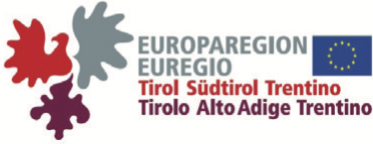Paul Egré and Benjamin Spector
- Area: LaLo
- Level: I
- Week: 1
- Time: 14:00 – 15:30
- Room: D1.01
Abstract
The goal of this course is to show how certain types of trivalent logics that can be used to model natural language phenomena -‐focussing on presuppositions, vagueness,and plural semantics.
- We will start with a presentation and comparison of the Strong
Kleene semantics and the supervaluationist framework for
propositional logic, viewed as theories of vagueness in natural
languages. We will also present the`Strict, Tolerant, Classical’
framework of Cobreros et al. and its application to vagueness. - We will then move to presuppositions and present the Middle Kleene
approach to presupposition projection for a propositional fragment. - We will show how some of these systems can be extended to
languages that include generalized quantifiers. - We will address recent attempts to provide a uniform multivalent
semantics that can deal simultaneously with presupposition and
vagueness. - We will discuss a recent application of Strong Kleene semantics to
the semantics and pragmatics of plural expressions.
Recommended textbooks
If you are encountering three-valued logics for the first time, we recommend the following textbooks as excellent introductions:
JC. Beall and Bas van Fraassen, Possibilities and Paradox, OUP, 2003.
Graham Priest, An introduction to non-classical logics, 2nd edition, OUP, 2008.
Outline of the course
—
Session #1: Introduction & Overview of Trivalent Logics
- General problem: the projection of vagueness and the projection of presupposition
- Supervaluations, Strong Kleene, Weak Kleene and their duals.
- Applications to vagueness
Slides Day #1: pdf
NB. This overview really is meant as an overview, it may seem fairly abstract and technical, so do not worry if you don’t get everything at once, we will revisit some of the main semantics in a different guise on Day 2. If you missed Session 1, you can get a complete fresh start in Session 2 !
—
Session #2: Presupposition (and vagueness) projection
- The problem
- Strong Kleene
- Middle Kleene
- Accommodation
- Incremental supervaluationism
Handout Day #2: pdf
—
Session #3: Presupposition projection in quantified contexts
- Extending Strong Kleene and Middle Kleene to a language with generalized quantifiers
Handout Day #3: pdf
—
Session #4: Strict Tolerant semantics
- Borderline contradictions
- Three-valued ST
- Gaps vs. Gluts
- Local ST
Slides Day #4: pdf
—
Session #5: Plurals and Homogeneity, integrating vagueness and presupposition
- Homogeneity vs. Vagueness
- Time-permitting: integrating vagueness and presupposition in a single multivalent semantics.
Slides/Handouts Day #5:
Integrating vagueness and presupposition, Plurals, homogeneity and non-maximality
Selected References
Vagueness and Trivalence
Alxatib, S. and Pelletier, F. J. (2011). The psychology of vagueness: Borderline cases and contradictions. Mind & Language, 26(3):287–326.
Alxatib, S., Pagin, P., and Sauerland, U. (2013). Acceptable contradictions: Pragmatics or semantics? a reply to Cobreros et al. Journal of philosophical logic, 42(4):619–634.
Cobreros, P., Egré, P., Ripley, D., and van Rooij, R. (2012). Tolerant, classical, strict. Journal of Philosophical Logic, 41(2):347–385.
Cobreros, P., Egré, P., Ripley, D., and van Rooij, D. (2015a). Vagueness, truth and permissive consequence. In D. Achouriotti, H. Galinon, J. M., editor, Unifying the Philosophy of Truth, pages 409–430. Springer.
Cobreros, P., Egré, P., Ripley, D., and van Rooij, R. (2015b). Pragmatic interpretations of vague expressions: strongest meaning and nonmonotonic consequence. Journal of Philosophical Logic, 44(4):375–393.
Egré P. and Zehr J. (2016). Are Gaps preferred to Gluts? A closer look at borderline contradictions. Manuscript, under review.
Ripley, D. (2011). Contradictions at the border. In Nouwen, R., Schmitz, H.-C., and van Rooij, R., editors, Vagueness in Communication.
Ripley, D. (2013). Sorting out the sorites. In Tanaka, K., Berto, F., and Mares, E., Eds, Paraconsistency: Logic and Applications, pages 329–3. Springer.
Serchuk, P., Hargreaves, I., and Zach, R. (2011). Vagueness, logic and use: Four experimental studies on vagueness. Mind & Language, 26(5):540–573.
Zehr, J. (2014). Vagueness, Presupposition and Truth-Value Judgments. PHD Thesis, ENS, Paris.
Presupposition, Homogeneity and Trivalence
Beaver, D. and E. Krahmer (2001). A partial account of presupposition projection. Journal of Logic, Language and Information 10,147–182.
George, B. R. (2008). A new predictive theory of presupposition projection. In Proceedings of SALT, Volume 18, pp. 358–375.
Kriz, M., forthcoming. Homogeneity, Non-maximality, and ‘all’. Journal of Semantics.
Kriz, M. and B. Spector. Maximality, homogeneity and alternatives. Ms.
Križ, M. and E. Chemla. (2014) Two methods to find truth-value gaps and their application to the projection problem of homogeneity. Natural Language Semantics : 1944.
Löbner,S.(2000).Polarity in natural language predication, quantification and negation in particular and characterizing sentences. Linguistics and Philosophy 23(3), 213–308.
Peters, S. (1979). A truth-conditional formulation of Karttunen’s account of presupposition. Synthese 40(2), 301–316.
Spector,B (2015). Multivalent semantics for vagueness and presupposition. Topoi, doi: 10.1007/s1124590149929291
Zehr, J. (2013). ST5: a 5-valued logic for truth-value judgments involving vagueness and presuppositions. In M. Colinet, S. Katrenko, and R. K. Rendsvig (Eds.), Pristine Perspectives on Logic, Language and Computation, Volume 8607, pp. 247–265. ESSLLI 2012-2013.














